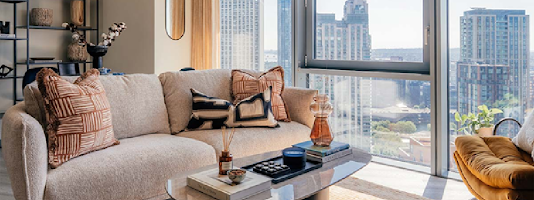Modern commercial buildings function as international projects at a time when architectural projects transcend their geographical boundaries. The construction of a commercial building in Dubai typically requires leadership from European architects while employing Asian engineers. The phenomenon shows increasing signs of growth, which produces opportunities while presenting new difficulties. As per STYLARC, recent business collaborations across borders now determine the way commercial architecture will evolve in the future.
The Rise of Global TeamsThe Global Commercial
Architectural Design Services works to develop buildings which establish a
remarkable presence at international levels. Major businesses support the least
essential architects regardless of their location. Internet technologies have
made effortless collaboration possible between teams which work across
different countries and continents.
Rates of collaboration between distant teams increase through the utilisation of Zoom meetings and cloud-based applications, which let teams communicate their designs instantly. The collaborative process creates new opportunities to blend distinctive cultural concepts between different populations.
Different Rules, One Building
Legal regulations pose the biggest
obstacle during this process. The national governments of each country enforce
unique laws for building construction. The Canadian construction standards,
which prove suitable in Canada, frequently fail to satisfy requirements in
Japan.
All designs demand prior examination of legal standards by architects. The process of design development becomes longer while expenses tend to increase at such moments. The building requirements sometimes demand expertise from local professionals to satisfy all legal specifications.
Language and
Culture Gaps
A cross-border operation requires architects to handle various languages together with cultural differences. A single expression holds s different meaning dependent on which nation you are in. Modern design looks different between places despite using the same term. Project delays and design conflicts result from misinterpretations which occur between teams. According to STYLARC, teams need to practice openness while showing patience and excellent listening abilities.
Time Zones and
Schedules
The different time zones between locations result in substantial difficulties for group work. The current time in New York follows different hours from those of Tokyo. Planning meetings becomes a complex task because of this situation. Flexible deadlines need to exist together with thorough organisational plans. Round-the-clock teams serve as a company strategy that keeps continuous project work scheduled across all shifts.
New Tech, New
Solutions
New technological advancements help tackle numerous problems that arise in daily life. The software program BIM (Building Information Modeling) enables teams to view projects in 3D design as one unified perspective. Using current technology makes it possible for everyone to view what any single person modifies. The method enables Luxury Project Planning & Management Services to work without misunderstanding, which ultimately saves time.
Additionally, VR (Virtual Reality) equipment enables designers to experience the constructed design through virtual walking before actual construction begins. The technique provides clear space comprehension to people across different locations.
Innovation Through Diversity
The collaboration of workers who come from various geographical locations generates new information between them. The combination of Scandinavian environmental building approaches joins forces with daring Middle Eastern architectural concepts in a single project team. The fresh combinations produced in this manner shape emerging design patterns while incubating upcoming development ideas. Global partnerships maintain their most important strength in their ability to create revolutionary solutions.
Conclusion
The implementation of global commercial architecture from STYLARC extends beyond its usual presentation of glass and steel components. This narrative tells the essence of people who unite globally to create worldwide change. The modern built environment represents diverse stories which crowds from worldwide locations create.





No comments:
Post a Comment